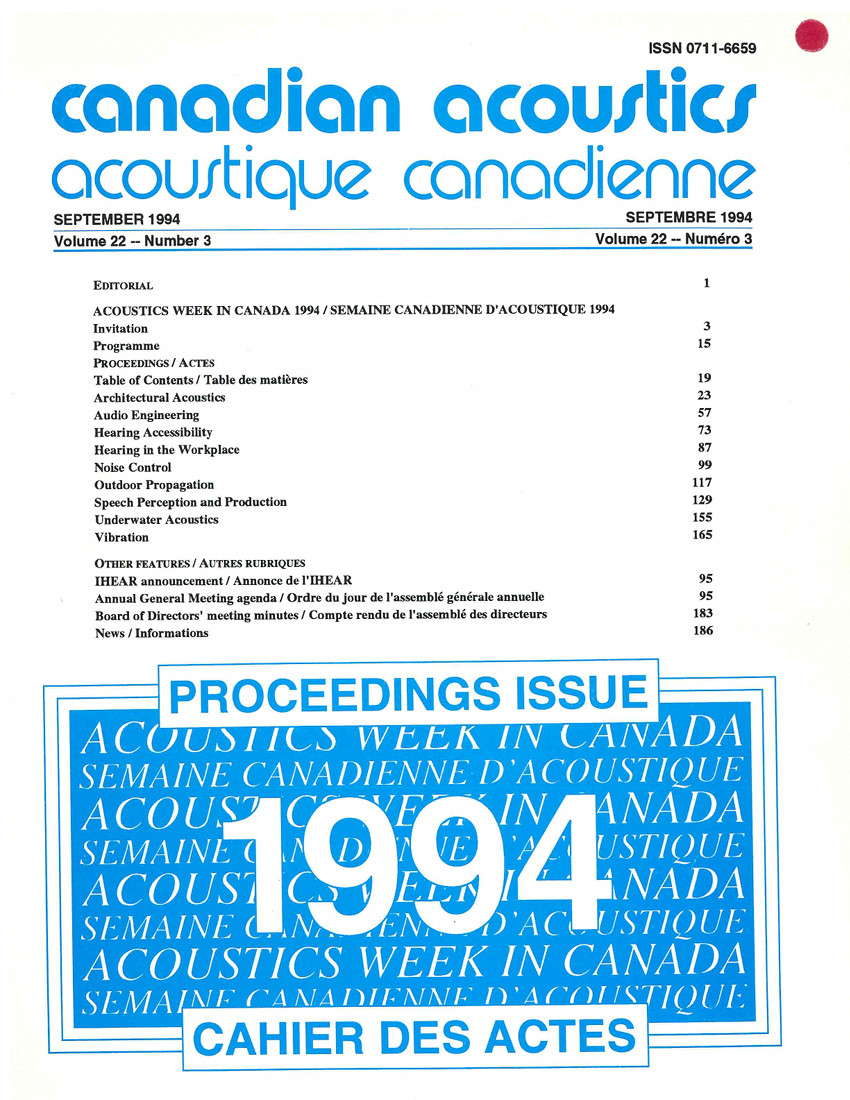The components of spatial impression in concert halls
Keywords:
architectural acoustics, sound fields, early lateral energy, informal listening tests, listener envelopment, reverberant energy, spatial impression, apparent source widthAbstract
Spatial impression is usually loosely described as the sense of being enveloped by the sound or as an increase in the apparent width of the source. In a previous study by the authors (1993), the findings of Barron (1971) and Keet (1968) were verified in experiments using sound fields consisting of a direct sound and a few early reflections. The results confirmed that the apparent width of the source increases with increasing early lateral energy. It was also found however that although a broadening of the source was evident for these simple sound fields, listeners never felt enveloped (surrounded) by the sound. In a series of informal listening tests, it was found that a sense of listener envelopment could be obtained by including late arriving or reverberant energy in the sound fields. Furthermore, the addition of reverberant energy was found to reduce the listener's ability to discriminate the effects of early lateral energy. Several subjective experiments were conducted to explore these issues. The results indicate that spatial impression has two distinct components: apparent source width (ASW) and listener envelopment(LE)Additional Files
Published
How to Cite
Issue
Section
License
Author Licensing Addendum
This Licensing Addendum ("Addendum") is entered into between the undersigned Author(s) and Canadian Acoustics journal published by the Canadian Acoustical Association (hereinafter referred to as the "Publisher"). The Author(s) and the Publisher agree as follows:
-
Retained Rights: The Author(s) retain(s) the following rights:
- The right to reproduce, distribute, and publicly display the Work on the Author's personal website or the website of the Author's institution.
- The right to use the Work in the Author's teaching activities and presentations.
- The right to include the Work in a compilation for the Author's personal use, not for sale.
-
Grant of License: The Author(s) grant(s) to the Publisher a worldwide exclusive license to publish, reproduce, distribute, and display the Work in Canadian Acoustics and any other formats and media deemed appropriate by the Publisher.
-
Attribution: The Publisher agrees to include proper attribution to the Author(s) in all publications and reproductions of the Work.
-
No Conflict: This Addendum is intended to be in harmony with, and not in conflict with, the terms and conditions of the original agreement entered into between the Author(s) and the Publisher.
-
Copyright Clause: Copyright on articles is held by the Author(s). The corresponding Author has the right to grant on behalf of all Authors and does grant on behalf of all Authors, a worldwide exclusive license to the Publisher and its licensees in perpetuity, in all forms, formats, and media (whether known now or created in the future), including but not limited to the rights to publish, reproduce, distribute, display, store, translate, create adaptations, reprints, include within collections, and create summaries, extracts, and/or abstracts of the Contribution.


